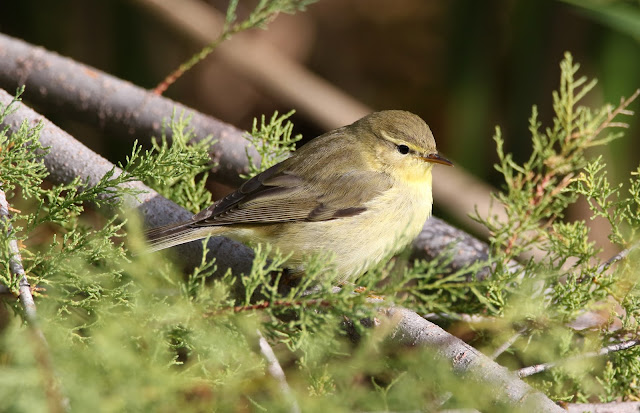Esta entrada esta dedicada a la invernada de zorzales en los parques urbanos de Madrid.
Este es un excelente año para ver en los parques periurbanos de Madrid algunos de los zorzales más escasos como son el Zorzal Real y el Zorzal Alirrojo.
Posiblemente por escasez de alimentos en Europa, este año se están desplazando más al sur y en parques donde haya abundancia de frutos de Majuelo o también llamado espino albar tendremos la oportunidad de ver algunos de estos zorzales, junto a los más comunes Zorzal Común y Charlo.
ZORZAL COMÚN/ Song Thrusk (Turdus philomelos)
ZORZAL CHARLO/ Mistle Thrush (Turdus viscivorus)
ZORZAL ALIRROJO/Redwing (Turdus iliacus)
ZORZAL REAL/Fieldfare (Turdus pilaris)
Este es un excelente año para ver en los parques periurbanos de Madrid algunos de los zorzales más escasos como son el Zorzal Real y el Zorzal Alirrojo.
Posiblemente por escasez de alimentos en Europa, este año se están desplazando más al sur y en parques donde haya abundancia de frutos de Majuelo o también llamado espino albar tendremos la oportunidad de ver algunos de estos zorzales, junto a los más comunes Zorzal Común y Charlo.
This post is dedicated
to the wintering of thrushes in the urban parks of Madrid.
This is an excellent
year to see in some urban parks of Madrid some of the scarce thrushes, such as
the Fieldfare and the Redwing. One explanation to this influx could
be the food shortages in Europe, for this reason this year they are moving
further south and is easy to observer in parks where there is abundance of Common Hawthorn.
ZORZAL COMÚN/ Song Thrusk (Turdus philomelos)
ZORZAL CHARLO/ Mistle Thrush (Turdus viscivorus)
ZORZAL ALIRROJO/Redwing (Turdus iliacus)
ZORZAL REAL/Fieldfare (Turdus pilaris)

































































